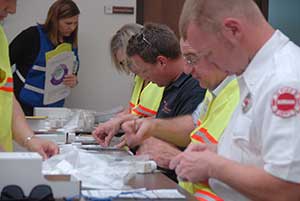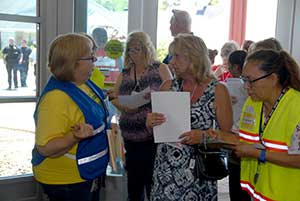

WIC http://www.stickneypublichealthdistrict.org/WIC.html
• Stickney
Know the warning signs.
Sign up for the Emergency Alert System or listen to the NOAA Weather Radio.
Pay attention to weather reports.
Establish where you can safely shelter.
Gather important documents in a safe, hazard-free place (i.e. fire-proof, water-proof box).
Gather and store suppplies (non-perishable foods, cleaning supplies, dringing water).
Plan for your pets.
Stay away from windows, doors, and exterior walls.
Watch out for flying debris.
Use your arms to protect your head and neck.
Place blankets, coats, or other such material around your body.
If you are in a car, DO NOT try to outrun a tornado.
Cover your head and neck, place blankets or coats around your body.
Once the tornado has past: Stay clear of debris, including fallen or broken power lines.
Contact emergency services if you or someone else need medical attention.
DO NOT ATTEMPT TO DRIVE, SWIM, OR WALK THROUGH FLOOD WATERS: TURN AROUND, DON’T DROWN.
Just 6 inches of moving water can knock you down.
One foot of moving water can sweep your car away.
Stay off bridges over moving water.
Evacuate if told to do so by emergency services.
Move to higher ground or a higher floor.
Stay where you are until instructed otherwise by emergency services.
Pay attention to alerts and warnings.
Avoid using electronic devices that are plugged into an electrical outlet.
Avoid running water.
Watch for fallen power lines and trees.
Report any fallen power lines and trees to emergency services.
Temperatures greater than 90 degrees that last for more than two days.
Humidity can increase the feeling of heat as it is measured by a heat index.
Can occur quickly and without warning.
Older adults, children, or individuals who are unwell are at greater risk.
Find air conditioning.
Avoid strenuous activities.
Wear lightweight clothing.
Wear a hat while outside.
Check on family members and neighbors.
Drink plenty of fluids.
Monitor for heat cramps, heat exhaustion and heat stroke.
Never leave people or pets in an enclosed car.


